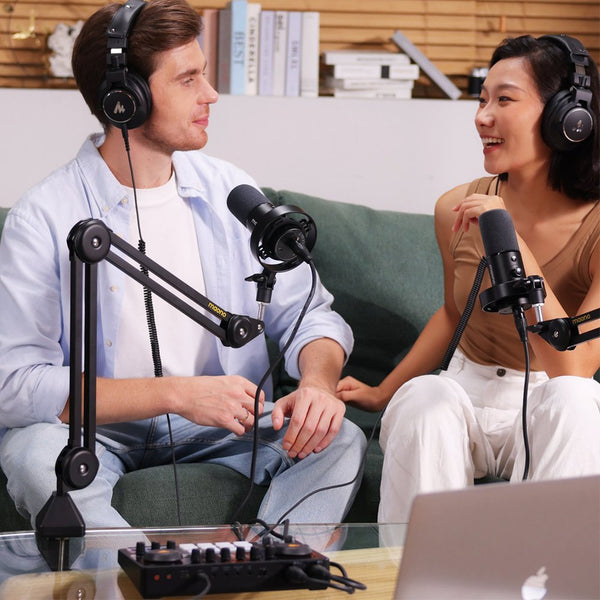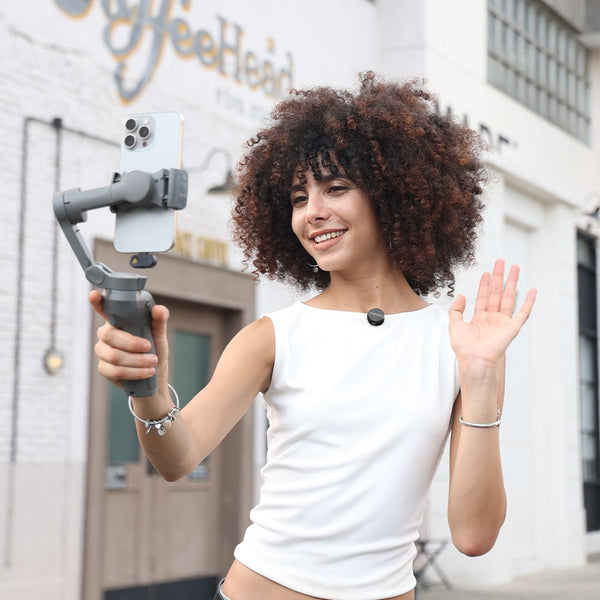As technology progresses, so do audience expectations. With millions of content creators across the globe, the competition for online presence is becoming more demanding. One crucial edge you should focus on is your audio quality. This article highlights the importance of investing in the right USB microphone for singing, as it helps you record a clear and crisp voice that will surely capture your audience’s attention.
Recording vocals at home has never been easier—or more popular. From aspiring artists uploading covers to YouTube, to singers creating short clips for TikTok or Facebook, clear vocal recordings are now essential for standing out. But one common frustration persists: why doesn’t my recorded voice sound like what I hear when I sing? If you've ever struggled with hearing yourself clearly while recording, you're not alone.
Also, this guide will walk you through how to hear your singing voice more clearly during recording sessions at home. From choosing the best USB microphone for singing to fine-tuning your room and audio gear, we’ll help you make your home vocal setup sound more like a pro studio.
How to Hear Your Singing Voice Clearly When Recording?
Whether you're recording demos, voiceovers, or musical covers, clarity matters. When your recorded vocals sound muffled, too quiet, or overly echoey, it's often due to poor setup, gear mismatch, or acoustics. Hearing yourself clearly while singing isn't just about vocal technique—it's also about using the right equipment and setup.
How Important Is Choosing the Right Singing Microphone?
Choosing the best microphone for singing can make or break your recording quality. Platforms like YouTube, TikTok, and Facebook compress your audio during upload, so starting with the cleanest, clearest vocal input ensures your performance sounds great no matter the platform.
Investing in a quality condenser microphone like the Maono PM450 or Maono AU A04—two models that qualify as best affordable microphones for singing—will make a huge difference in capturing your voice's full range and nuance.
Tips to Improve Audio Quality in Recording
1. How Can I Hear Myself Better While Singing?
To sing confidently and stay in tune, you need to hear yourself in real-time. This is where real-time monitoring comes in.
Tips:
-
Use a microphone with zero-latency monitoring, which allows you to hear your voice as it's being recorded without delay.
-
Use a monitoring headphone amp or audio interface with direct monitoring capabilities.
-
Don’t rely on speakers—always use closed-back headphones to avoid feedback and ensure isolation.
2. What Headphones Should I Use to Hear My Voice Clearly?
Closed-back studio headphones are ideal because they block outside noise and prevent sound leakage into the mic. This is crucial when tracking vocals.
Recommended: Maono MH700
-
Delivers balanced, detailed sound
-
Comfortable for long sessions
-
Excellent isolation so you can focus solely on your voice
The Maono MH700 is a reliable choice for both beginner and intermediate home recordists who need to monitor vocals without distractions.

3. How Do I Reduce Room Echo in My Recordings?
Room echo—or reverb—can muddy your vocal sound. Most home environments have reflective surfaces (walls, windows, floors) that bounce sound around.
How to fix it:
-
Use foam acoustic panels or portable vocal booths to treat your recording space.
-
Hang heavy curtains or blankets around your recording area.
-
Use a reflection filter behind the mic.
-
Record in a smaller room with carpet and soft furnishings.
Reducing echo ensures the mic captures just your voice—not the room.
Frequently Asked Questions About Singing Microphones
What Mic Settings Give the Clearest Vocal Sound?
For most condenser microphones, like the Maono PM450, here are general settings to start with:
-
Input gain: Adjust so that levels peak around -6dB (no red clipping)
-
Sample rate: 44.1kHz or 48kHz
-
Bit depth: 24-bit is ideal for vocal clarity
-
Low-cut filter: Engage if your voice sounds too boomy or there's background rumble
Test your levels before recording to ensure clean capture.
Should I Use a Pop Filter for Clearer Vocals?
Yes! A pop filter is a simple but essential tool to reduce plosive sounds—those “P” and “B” bursts that can distort audio. It also helps maintain a consistent distance between your mouth and the microphone.
Position the pop filter about 2–3 inches in front of the mic, and keep your mouth 6–8 inches away for the best results.
How Do I EQ My Voice for a Crisp Sound?
Equalization (EQ) shapes the frequency balance of your vocals. Here's a starting point:
-
High-pass filter: Cut everything below 80–100 Hz to remove low-end rumble.
-
Add clarity: Boost around 4–5 kHz slightly for presence.
-
Reduce muddiness: Cut around 200–400 Hz if the vocal sounds boxy.
-
Air: Add a light boost around 10–12 kHz for brightness.
Use subtle tweaks—over-EQ’ing can make vocals sound unnatural.
How Close Should I Be to the Mic for the Clearest Voice?
Mic distance significantly affects tone and clarity. Stay 6–8 inches away from the mic for a natural, full-bodied vocal sound. Use a pop filter as a distance guide.
If you're too close, you’ll get a proximity effect (extra bass), and too far will make your voice sound thin and pick up more room noise.
What’s the Best Room Setup to Record Clear Singing?
-
Choose a small, quiet room.
-
Remove reflective surfaces: glass, tile, etc.
-
Place rugs or mats on the floor.
-
Use acoustic foam or DIY absorbers on walls near your mic.
Set up your mic away from windows and walls—ideally in the center of the treated space.
What’s the Best Singing Microphone to Hear Yourself Clearly?
Two excellent budget condenser mics for home singing:

-
Type: Condenser
-
Connection: USB plug and play
-
Why it's a pro singing microphone:
-
Professional sound clarity
-
Durable metal construction
-
Great for recording vocals for YouTube or music projects
Maono AU A04 (or Maono A04)

-
Type: Condenser
-
Connection: USB Plug-and-play
-
Why it's the best affordable microphone for singing:
-
No interface required
-
Excellent clarity for the price
-
Ideal for beginners recording vocals at home
Both are budget-friendly. The AU A04 is among the best USB microphones for singing, offering simplicity for beginners, while the PM450 gives more flexibility and pro-level sound via XLR connection and interface control. These options rival many higher-priced models and are also suitable as best microphones for singing live at small venues or streamed performances.
Conclusion
Recording your singing voice clearly at home is achievable with the right combination of tools and setup. From reducing room echo to choosing a good microphone for vocals, each small adjustment leads to major improvements in your sound.
Takeaways:
-
Use closed-back headphones like the Maono MH700 to hear your vocals clearly while tracking.
-
Set up your space to minimize echo and outside noise.
-
Use a condenser microphone like the (Maono A04) or Maono AU A04 (USB) or the Maono PM450 (XLR mic)—among the best microphones for singing today.
-
Optimize your mic position and apply EQ/pop filters for extra clarity.
Whether you’re recording covers for YouTube or belting out your own originals on TikTok, sounding your best starts with hearing yourself properly. Take time to build a vocal setup that gives you the confidence to perform, record, and share your music with the world using the best singing microphone suited to your needs.



